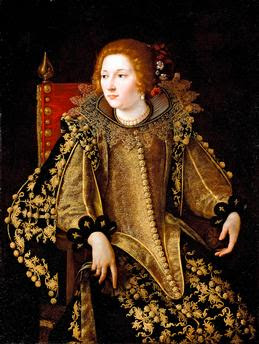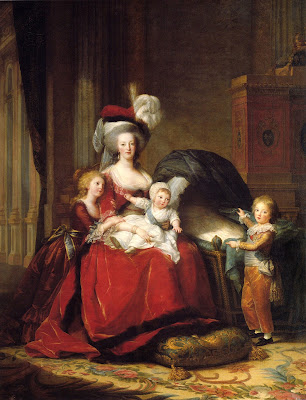In honor of women history month it is time to acknowledge that while there is an abundance of female talent in the art world, it is difficult for female artists to be recognized and honored until today; and a couple centuries ago, it was nearly impossible. But it was still done - Antiquity, the Middle Ages, Renaissance and Baroque all show examples of extraordinary female art, though it is very rarely the topic of our conversations. The 20th century allowed many marginalized groups to express themselves and find an audience, but it has been and still remains harder for female artists to gain recognition than it is for their male counterparts. As the anonymous feminist group 'Guerrilla Girls' has pointed out, only 4% of artworks in the modern art section of museums are by women.
Here are some shining examples from past and present that prove that no circumstance could stay in the way of real art and talent. I have noticed that contemporary female artists in articles such as mine tend to be entirely on women from North America, that's why I tried to incorporate as many artists from all over the world as possible (to my limited Westernized knowledge). I'd love if you commented with you favorite artist or let me know of someone important I have left out!
Artemisia Gentileschi (1593-1653)
In times where women rarely painted, Gentileschi, a woman of extraordinary skill and talent, earned tremendous success, filled huge canvasses with historical and mythological topics (the highest art forms, guarded only for men); she had a workshop with male employees and earned more money than most of her male colleagues.
 |
| 'Self-Portrait as Female Martyr', 1615 |
 |
| 'Portrait of a Seated Lady', 1620 |
Judith Leyster (1609-1660)
The Dutch Golden Age - what a glorious time for art yet we always think of Vermeer, Hals or Steen. I find this 'female' way of depicting drunk boys to be very accurate! Leyster was quite successful in her lifetime, afterwards, she was forgotten and her paintings were sold off under the names of male colleagues, but her position in art history was luckily reevaluated in the 19th century.
 |
| 'The Last Drop', 1639 |
 |
| 'Three Merry Boys', 1620s |
Elisabeth Vigée-Lebrun (1755-1842)
There are many great female French artists, but my favorite is Vigée-Lebrun. She painted the world famous portraits of Marie-Antoinette and helped create the myth of a gorgeous, glamorous queen, while giving the Rococo, and later the Neocalssical movement, a particularly feminine perspective it so painfully lacked by making the women she painted appear unusually relaxed, natural. She was, like Gentileschi, highly successful, not even the French Revolution put her reputation to a halt, she travelled through Europe and worked on many commissions.
 |
| 'Portrait of a Young Musician', 1777 |
 |
| 'Marie Antoinette with Children', 1787 |
Mary Cassatt (1844-1926)
Many people assume Cassatt was French, but she was an unmarried American woman living and working in Paris and also the most famous female artist of the 19th century, along with Berthe Morisot. An Impressionist, and a popular one during her lifetime, she criticized the academic art system for being misogynist and was a keen supporter of women's equality. While her art is in no way political, it is devoted to depictions of women and children.
 | ||
'In the Loge', 1878
|
Hilma af Klint (1862-1944)
This Swede was completely forgotten in the 20th century and now that she was rediscovered, she is dubbed one of the most extraordinary artists of the 20th century. Turns out, she preceded Kandinsky with her versions of abstraction! A woman invented abstract art. Ha. The theoretical background of her paintings is mysticism and spirituality, a sort of geometric 'language' she developed to express the making of this world and the afterworld. Unfortunately, she never dared to exhibit her work and even asked for her work to not be touched for 20 years after her death - she has rightly foreseen that the world was not ready for her creative visions.
 |
| 'Primordial Chaos, Nr. 16', 1906-07 |
 |
| 'The Large Figure Paintings, nr 5, the Key to all Paintings to Date, Group III, the WU/Rosen Series', 1907 |
Tamara de Lempicka (1898-1980)
A dazzling and free-spirited woman that created art in an equally dazzling Art Deco / Cubist inspired style. Polish-born, she enjoyed great success in Paris, later on, she moved to the United States and Mexico. She has led the most exciting life (seriously, google, you will be very amused and intrigued!) which is very visible in her body of work that creates a counterpart to the common male gaze.
Natalia Gontscharova (1881-1962)
The Russian artist combined Neo-primitivism and different avant-garde movements in her very particular style and was leading in many domains - as a 'Cubo-Futurist' in Moscow, as member of the German artist group 'Der blue Reiter', as a costume designer for the 'Ballets Russes' in Paris, all that with fellow artist, collaborator and partner Mikhail Larionov by her side. Avantgarde meets old school :)
 |
| 'Self-Portrait', 1907 |
 |
| 'Blue Cow', 1911 |
Frida Kahlo (1907-1984)
Latin American icon Frida has taken on the international art scene lately. And while the public prefers focusing on her unibrow and sexual life, it is important to point out that she has led Surrealism to a completely different terrain - to the expression of female struggles, inexplicable pain and, despite it all, hope.
 |
| 'Las dos Fridas', 1939 |
Amrita Sher-Gil (1913-1941)
Another avantgardist, of Hungarian-Indian heritage, and one of the most famous Indian painters until today. Like Lempicka, she had a very interesting family history and her life was filled with extensive travel and erotic adventure, though it was very short - she died at 28. Her vast oeuvre is marked by a mixture of Western and Indian influences; her Indian works are dedicated to the poor and underprivileged population, with women in the foreground.
 |
| 'Self-Portrait', 1930 |
 |
| 'The Little Girl in Blue', 1934 |
Yayoi Kusama (born 1929)
The Japanese avant-garde, pop-art, minimalist and abstract artist and author became famous for her 'happenings' in the 1960s and has made the polka dot her trademark, whose origins, however, are rather tragic - as a child, she developed hallucinations and was seeing dots and patterns. She has used art to confront her psychological problems ever since and has always been open about that fact. After an artistically successful time in New York, Kusama returned to Japan where she lives in a mental institution but continues to be highly prolific by panting, designing, writing, exhibiting and even opening her own museum in Tokyo in 2017.
 |
| 'Pumpkin', 2010 |
Shirin Neshat (born 1957)
The Iranian artist lives in NYC, but the subject of her work is the artistic examination her homeland, mostly through video/audio installation. She has won numerous prizes like the First International Prize at the Venice Biennale and has directed a movie, 'Women Without Men', in 2009.
Xiao Lu (born 1962)
Lu is considered to be China's first performance artist and performance art would indeed not be the same without her. So far, she has married herself, shot at her own art and made her IVF-journey part of her work, among others. Like Neshat, she is also politically vocal through her work and critical of her home country.
Tracey Rose (born 1974)
How hard it is to find literature or even internet sources on female African artists! And we don't doubt that there are plenty after looking at my list... Tracey Rose is one of them, a South African artist and feminist who thematizes gender, socio-economic status and identity in her multi-media work.
Jenny Saville (born 1970)
Saville is a British painter and the most expensive living female artist. Just like Lempicka, though through completely different means, she is designing an alternative to the male gaze. She mostly paints female bodies - grotesque and monumental, distorted and compelling.
All images, as always, are from Wikicommons.
Talk to you soon,
J.











0 Comments